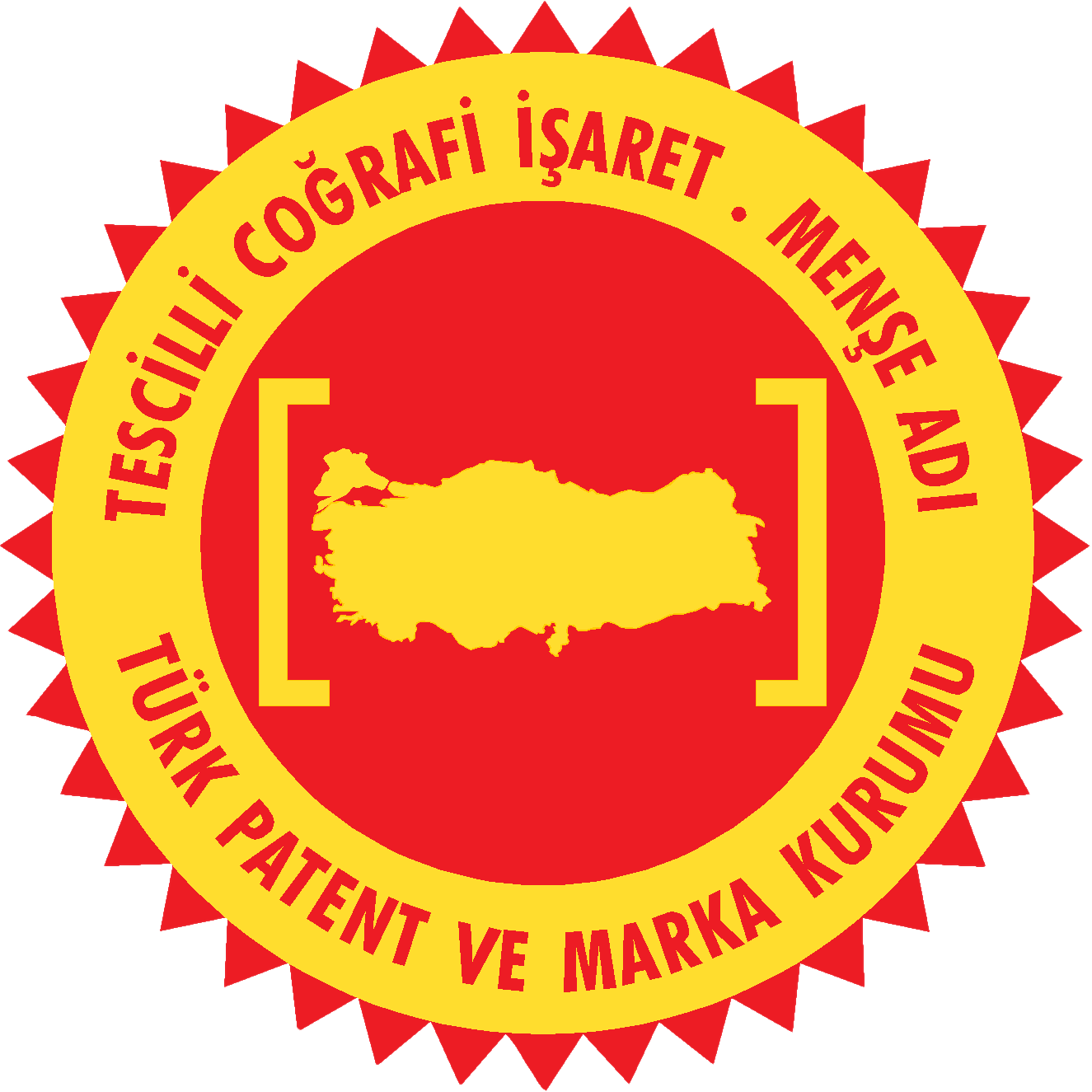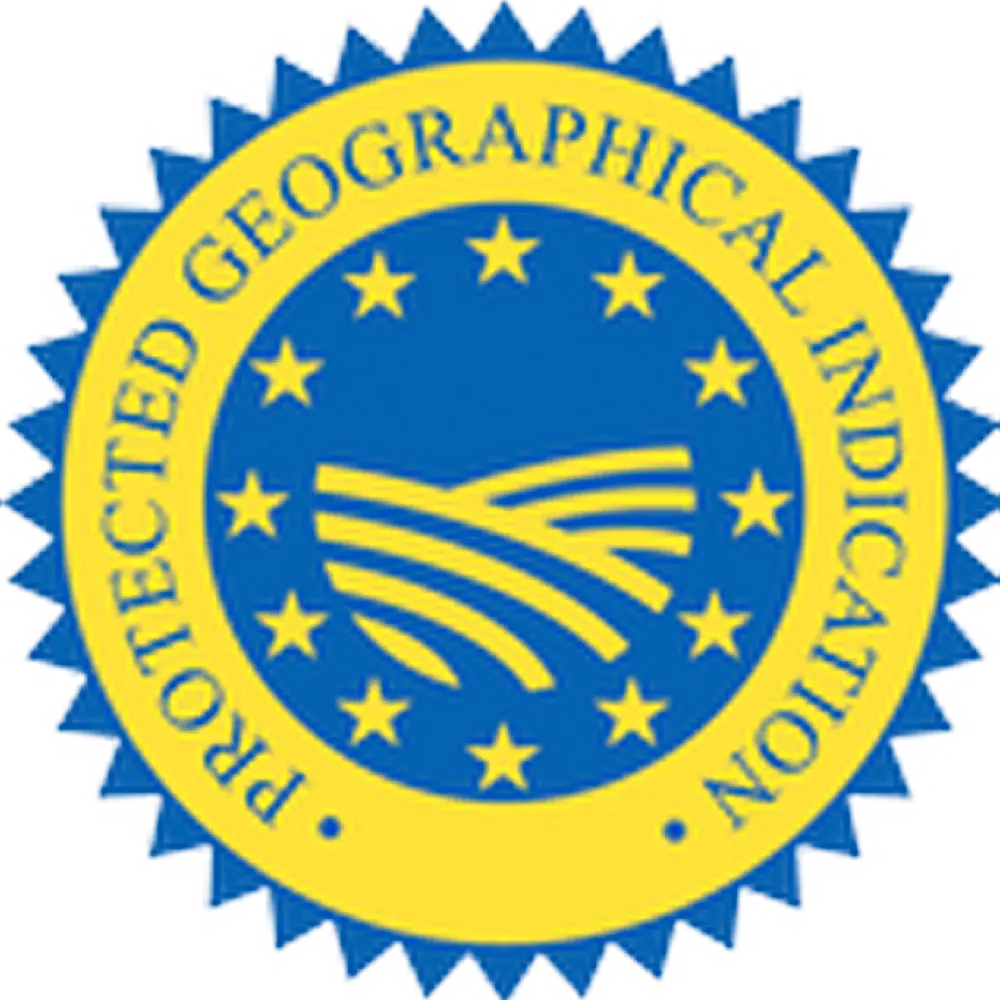Antep Baklava Protected Geographical Indication
Monday, July 4, 2022
No: 95 – Protected Geographical Indication (PGI)
ANTEP BAKLAVA
Registrant
Gaziantep Chamber of Industry
The geographical indication, of which the technical features and control format are given in the annex, was announced in the Official Gazette dated 27.04.2007 and numbered 26505. It has been registered to be valid from 28.03.2005 in accordance with Article 12 of the Decree Law on the Protection of Geographical Indications No. 555.
Registration Number : 95
Application date : 28.03.2005
Application Number : C2005/005
Release Date : 27.04.2007
Type : Protected Geographical Indication (PGI)
Applicant : Gaziantep Chamber of Industry
Address of the Applicant : Istasyon Cd. No:2/3 GAZIANTEP
Name of the Product : Baklava
Protected Geographical Indication (PGI) : Antep Baklava
Usage Format : Branding
Geographical Limits : Gaziantep Province
Description of the Product: “Antep Baklava” is a traditional dessert of Turkish cuisine. In Gaziantep, by being taught from father to son, from master to apprentice, it differed from home-made baklava with its production style and taste. The product is a dessert made by cooking pistachio and cream between very thin layers of dough and adding sherbet onto it.
The product has two versions as fresh and dry. Although the production method is the same, the only difference between dry and fresh baklava is that dry baklava is produced using only pistachios between the dough layers, without using cream, in order to extend its shelf life.
Raw materials of Antep Baklava;
Dough: Hard wheat flour, clarified butter (99.9% oil, free from additives, pure butter), hard wheat flour made from eggs and salt.
Sherbet: Sherbet made from sugar or sweetener (for the diabetic version).
Cream: Cream made from semolina and milk.
Pistachio: Antep Pistachio with geographical indication.
Starch: Wheat starch
Distinctive Features of the Product: Pistachio: It is a dark green colored, intense flavored Antep Pistachio, which barely matures in the first week of August and which is popularly referred to as "firik or boz-iç", yielding 110-170 g pistachio kernels per kilogram. With its nationwide reputation, Antep Baklava has become synonymous with Gaziantep province with its production style and Antep Pistachio. Geographical Indication registration of Antep Pistachio was made by Gaziantep Chamber of Commerce.
Clarified butter: It is pure butter obtained from goat's milk and prepared to contain 99.9% oil, clarified of salt and other ingredients.
Cream: It is obtained by boiling goat, sheep or cow's milk to 105-108 C° and adding semolina into it. (100 g semolina per 1000 g milk)
Flour: Flour obtained from hard wheat.
Cooking: It is cooked in stone (floored) ovens at 200-300 ° C, preferably with the fire of oak wood, by rotating it continuously for 30-45 minutes.
Production Method:
Dough preparation: Hard wheat flour is used for baklava dough. 2-4 eggs are added to 1 kg of flour. 10 g rock salt is added and mixed with water. The prepared dough is of the consistency of an earlobe. It should be rolled out very thinly, and approximately 35-40 pieces should fit into 2,5-3 cm.
Sherbet (consistence) preparation: Approximately 1,750 g sherbet is added to 1 kg of baklava.
Cream preparation: 1 kg of milk is boiled with 100 g of semolina at 100 °C. When thickens, it is set aside to cool.
General production recipe: Flour and eggs (2-4 eggs per 1 kg flour) is mixed with mineral salt (10 g per 1 kg) and water. The prepared dough is of the consistency of an earlobe. The dough is rolled out in the form of 50-100 gram lumps, the edges are cut and thinned. At least 9-11-13-15 of the lump of doughs are wrapped around a rolling pin and wheat starch is added between them. The dough is thinned until it is 1-1.5 meters wide and 2 meters long. At least 15-20 layers of dough are placed on the tray previously greased with clarified butter. The dough layers are laid on the tray by sprinkling clarified butter between them. The cream, which has been prepared and cooled before, is laid on the dough in thin layers. Pistachios are sprinkled on it. On top of that, layers of dough consisting of at least 15-20 layers are placed again, and the top part is made by sprinkling clarified butter between them. The edges of the dough are smoothed. After this stage, the baklava is sliced and butter is added. The tray of Baklava is put in the oven and baked for 30-40 minutes. When it comes out of the oven, boiling syrup at 102-110 °C is poured on the baklava.
Production Method: (4 kg. For the production of 1 tray of baklava)
-The tray is greased with clarified butter.
-Two single pieces of solid dough (phyllo dough) are placed on the tray.
-On top of it, pieces of dough (phyllo dough) are laid on it piece by piece. (about 550-650 g.)
-450-550 g. cream is spread on it and flattened with the help of a knife.
-On top of the cream layer, 400-450 g. of Antep Pistachio is sprinkled. The cream layer should not be visible under the pistachios.
-However, if dry Antep Baklava is to be made, cream is skipped.
-On top of the Cream-Pistachio layer, 15-20 layers of solid dough (phyllo dough) is laid.
-While the dough is being laid, wheat starch is sprinkled between them.
-Excess dough is cut with a knife and flattened to fit the tray.
-In the tray, Baklava is cut into the preffered shape as equal pieces, such as; small slice (small rectangular shape), shuttle (baklava shape), amulet slice (triangle), square, carrot slice (large triangular slices cut from center of tray to edge) are cut into equal parts as preferred.
-On top of that, 600-650 g of melted and filtered clarified butter is poured while hot.
-After letting it sit for a while, it is baked in the oven.
-When the top part of the phyllo dough is risen, the tray is taken from the oven. The space between the cut slices of cooked Baklavas are slightly widened with a knife.
-It sits for another two minutes.
-The consistence (sherbet) prepared before is poured while hot, onto the freshly out of oven Baklava tray.
-It is ready to serve.
Content: The average content of 1 kg "Antep Baklava" is as follows (with ±3 tolerance);
Antep Pistachio 10-11%
Cream 12-13%
Butter 15-16%
Sherbet (Consistence) 35-36%
Flour (Dough) 25%
Packaging: Since the product is sold on a weight basis, according to the customer's request it can be sold in 1,2,3,4 kg packages or trays, or the portion requested by the customer, in a way that will not let the product spoil or violate the health rules. Since the product has two versions, the consumer will be informed about the version during the sale process and it will be indicated on the packages in a way that the consumer can easily read: "DRY ANTEP BAKLAVA" for the dry version or "FRESH ANTEP BAKLAVA" for the fresh one. Although the term "fresh" refers to the product, as the product has traditionally been produced in this version, the term will be used depending on the manufacturer. The manufacturer of the product, the characteristics of the Antep Baklava and serving instructions will be stated in the packages.
Inspection: Baklava, one of the traditional Turkish desserts, is being produced all over the country as a product. Companies that manufacture baklava as "Antep Baklava" will be determined from tradesmen and trade registry records and tax records. In addition, companies producing Antep Baklava will be determined from the Union of Chambers and Commodity Exchanges of Turkey through chambers in Turkey.
Companies identified through various means, companies applying to Gaziantep Chamber of Industry for producing Antep Baklava, and all companies announcing that they manufacture Antep Baklava through the press and other media will be audited by the Audit Committee. Inspection will be carried out with the benefits which will be provided by Gaziantep University to Gaziantep Chamber of Industry, with a committee of 5-7 people (3-5 people from the members of Gaziantep Chamber of Industry 5th profession committee group "Flour, semolina and pasta industry", 7th profession committee group "Vegetable oil, oilseeds, nuts, confectionery manufacturing", 8th profession committee group "Processed wheat, bakery products and soft drink manufacturing” and 2-5 people to be selected from Gaziantep Chamber of Industry Board Members). A letter was received from Gaziantep University stating that the desired services will be provided under the supervision of registration procedures. The committee will regularly inspect the manufacturers determined by the above-mentioned procedures, once a year, according to the conditions of use, production method and distinctive features. In addition, manufacturers whose production was determined by the above-mentioned procedures will be inspected within 1-4 weeks from the date of determination, manufacturers who are complained to Gaziantep Chamber of Industry will be inspected within 1-4 weeks from the date of the complaint, depending on the physical distance. Inspection and evaluation of complaints will be carried out under the coordination of Gaziantep Chamber of Industry General Secretariat.
The inspection committee will come together before each routine inspection period and an inspection plan will be created according to the addresses of the producers to be inspected. According to the number of companies, the committee, if it deems necessary, is able to divide into two inspection groups as inner city and outer city and conduct the inspections thus and so. Pursuant to Article 20 of Decree Law No. 555, the required committee for inspection will be formed by Gaziantep Chamber of Industry as stated above. Laboratories of other necessary public and private sector institutions will also be utilized for a fee. In order to cover the costs of inspection, examination, research, reporting etc., the relevant audit fee will be collected from each company, provided that it is at most 5 times the gross minimum wage determined annually by the Turkish Labor Law. This fee will be reported to the companies after each audit, according to the costs incurred. In addition to this fee for the inspection of producers outside of Gaziantep province, the transportation, subsistence and registration fees of the inspectors will be collected from the companies in the relevant city. After these costs are notified to Gaziantep Chamber of Industry by the auditors, they will be shared equally among the companies that have undergone audits in that province.

Original text from ci.gov.tr.












